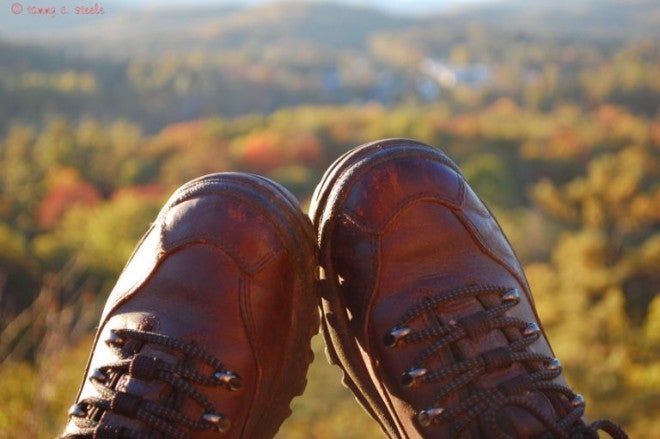Save Your Feet With A Multi-Sock System
Bob McNally 11.18.13

One of the surest, quickest, and most painful ways to ruin an outdoor trip – hunting, fishing, camping or hiking – is to have hot, cold, wet, sore, or blistered feet. If your feet are suffering, you’re not enjoying the Great Outdoors. So it behooves all sportsmen to take serious stock of their base extremities.
Thankfully, today’s footwear is so technologically advanced that it’s unnecessary for anyone to suffer pinched heels or sweaty toes, and much of the praise for this can be laid at the feet of futuristic sock design. In fact, when complaints about outdoor boots are made to footwear retailers, often the culprit isn’t the boots, but poorly-made or inappropriately-chosen socks. Even the best-made boots can become a pain for feet if high-quality socks are not used, too.
Modern socks can keep feet cool or warm, they can be waterproof but allow moisture to escape from feet, and they cushion foot pressure points so blisters, corns, and abrasions are minimized. But there’s plenty of confusion for outdoorsmen choosing socks, what with dozens of makes having impressive names like CoolMax, Ultimax, Thermax, Thermolite, Outlast, Polartec, SealSkinz, Gore-Tex, etc.
But the following “sock system guide” should help lead the way to happy feet, no matter the weather or how many miles they’re forced to trudge:
Hot Weather Sock System
“Sock liners” or “under socks” should almost always be put on bare feet headed outdoors. Be sure to use sock liners that extend at least as far up the calf as your boots. This prevents boot chaffing against bare legs.
For hot weather, ultra-thin sock liners made of synthetic material like polypropylene are needed to wick moisture away from skin. When hard walking is on tap, consider a sock liner material blend like Cabela’s Teflon/Thermax. Thermax wicks away moisture, and Teflon helps prevent blisters.
DuPont CoolMax is another popular sock liner. Tests show CoolMax fabric keeps body temperatures cooler due to superior wicking and “breathe ability.” CoolMax is also worn by the U.S. military and the NYPD.
Even in the hottest, stickiest weather, cushy “over socks” should go on outdoor feet next. Be sure the sock “foot bed” is especially well padded if you’ll be doing a lot of walking over hard ground. The best designs are synthetic materials to wick away moisture, since hot, wet feet blister quickly. Choose a polypropylene or CoolMax blend over sock, or one made from lamb’s wool, acrylic. or nylon.
Cold Weather Sock System
Begin with under socks that absorb and store body heat and wick away moisture, because your feet can sweat even when it’s below freezing. Under socks made from Thermax are an outstanding base layer for cold weather.
For over socks when the temperature is low, wool or a wool blend is hard to beat. Don’t skimp on quality, and be certain socks extend well up on the calf for chaff-resistance and for warmth. Blends like wool-Thermax, wool-Hollofil, and wool-Ultimax are excellent. Polartec is another well-known cold-weather fabric, and over socks made from them also are good.
Under Armour® ColdGear® Outdoor Boot Socks are superb for over socks, and have well-earned reputation for top quality, cold weather use.
Don’t be too concerned about choosing the right “weight” socks for cold weather (heavy, medium or light). Correct boot choice should be the final answer for the coldest temperatures.
Snow/Wet Weather Sock System
Start with under socks, type determined by cold or warm weather (see above).
For over socks, ones made by Gore-Tex (offered by Rocky) make sense. They completely waterproof your feet but also breathe, so perspiration wicks away. This is important even if you’re wearing waterproof boots, because you might spring a leak or go into a snow drift or puddle over the boot tops. Snug-fitting over socks of Gore-Tex that extend well up the calf eliminate wet feet.
If it’s cold, another pair of over socks made from wool can be put on over a waterproof pair.
It’s a good idea to have boots at least one full size larger than usual when using multi-layer sock systems. In cold weather, with extra-thick or two pairs of outer socks, sometimes boots two sizes larger than normal are needed.
Boots too small for multi-sock systems bind feet, reduces circulation, and results in blisters, cramping, and a miserable time outdoors.